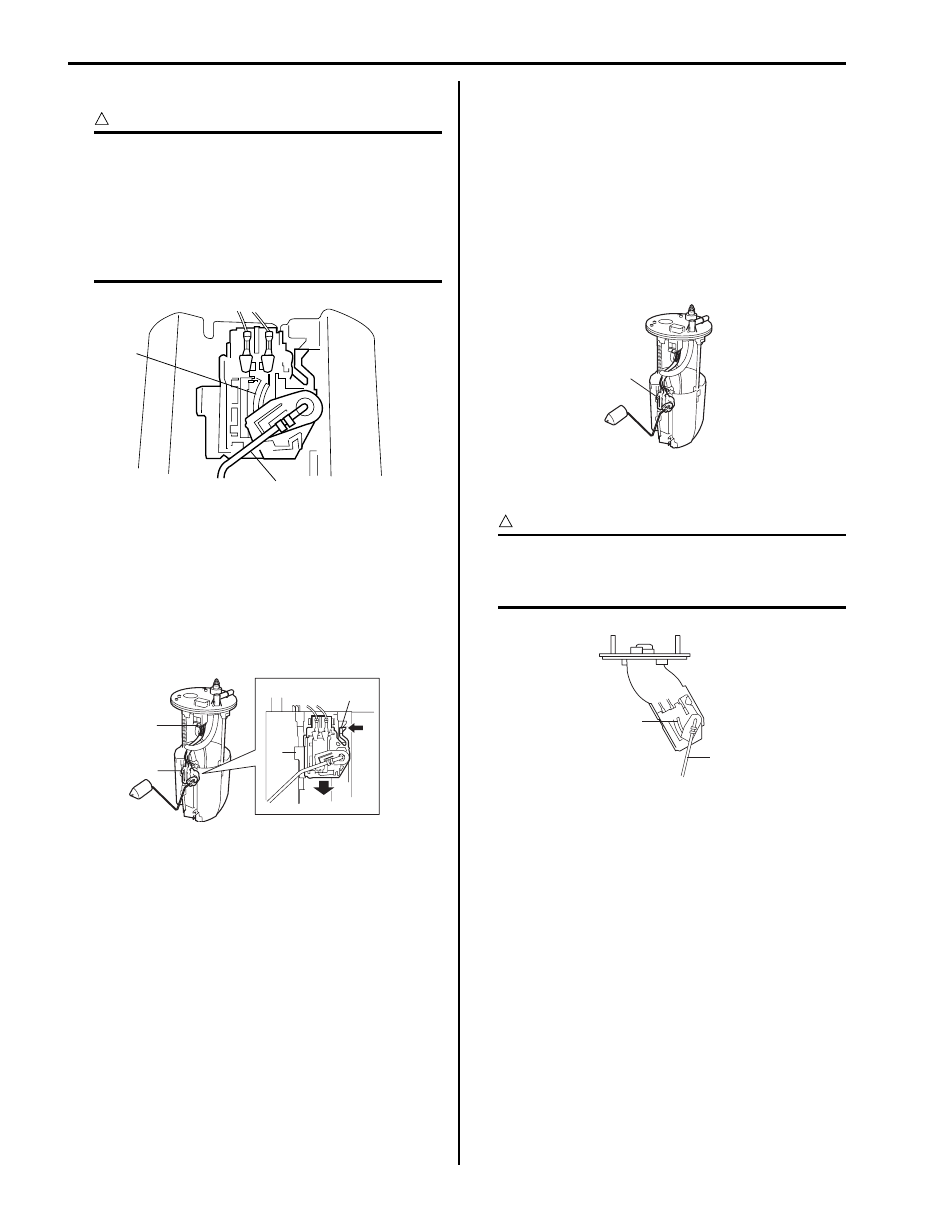Suzuki Grand Vitara JB627. Manual - part 109

1G-19 Fuel System:
Main Fuel Level Gauge Removal and Installation
S6JB0B1706020
CAUTION
!
• Do not touch resister plate (1) and deform
arm (2). It may cause main fuel level gauge
to fail.
• Be very careful not to cause damage to
fuel tube installed section (sealed section
in bore). If it be damaged, replace it with
new one, or fuel will leak from the part.
Removal
1) Remove fuel pump assembly from fuel tank referring
to “Fuel Pump Assembly Removal and Installation”.
2) Disconnect main fuel level gauge connector (3).
3) With pressing snap-fit part (2), remove main fuel
level gauge (1) by sliding it in the arrow direction as
shown in figure.
Installation
Reverse removal procedure for installation.
Fuel Pump Inspection
S6JB0B1706021
• Check fuel pump assembly for damage.
• Check fuel suction filter for evidence of dirt and
contamination.
If present, replace or clean and check for presence of
dirt in fuel tank.
• For electrical circuit, refer to “Fuel Pressure Check in
• For inspection of main fuel level gauge (1), refer to
“Fuel Level Sensor Inspection in Section 9C”.
Sub Fuel Level Gauge Removal and Installation
S6JB0B1706022
CAUTION
!
• Do not touch resister plate (1) and deform
arm (2). It may cause sub fuel level gauge
to fail.
1
2
I4RS0A170016-01
1
3
1
2
I5JB0A171026-01
1
I5JB0A171027-01
2
1
I5JB0A171028-01